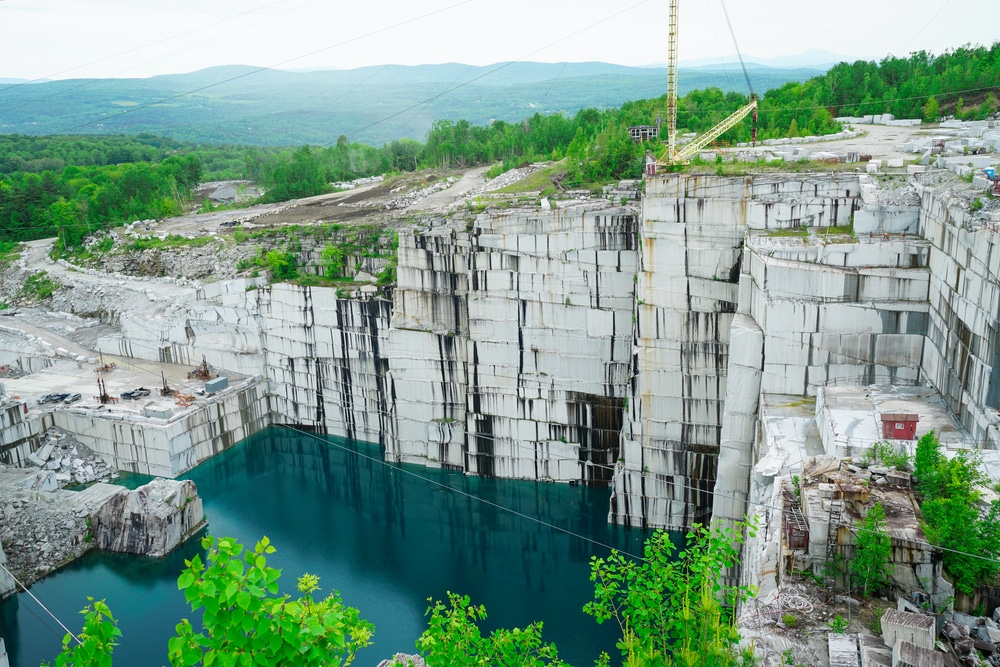Introducing the Mysteries of Granite Quarrying: Where Strength and Beauty Meet
The globe of granite quarrying is a realm where the raw strength of nature assembles with human virtuosity to develop structures that stand the test of time with an air of style. From the depths of quarries to the precise sprucing up in workshops, the procedure of changing granite into architectural marvels is a complex dance of custom and advancement. As we peer right into the depths of this old craft, we start to discover the concealed details that form the really significance of our constructed setting.
The Origins of Granite Quarrying
In the annals of building background, the origins of granite quarrying are shrouded in a tapestry of ancient workmanship and geological wonders. Dating back to old Egypt and Mesopotamia, the removal of granite from quarries marked the beginning of a journey that would eventually bring about the creation of a few of the globe's most famous structures.
Granite quarrying's origins can be mapped to the competent artisans that recognized the rock's longevity and aesthetic allure. Through a mix of primitive tools and large determination, these early quarry employees discovered granite blocks that would end up being the structure blocks of people.
As civilizations advanced, so did the techniques of quarrying granite. The Romans, renowned for their design expertise, developed sophisticated methods for drawing out granite to create monoliths, temples, and roads that stood the examination of time.
The legacy of these ancient quarrying methods remains to shape modern design, with granite continuing to be a symbol of strength and beauty in building and construction tasks around the globe. (granite quarries in south africa)
Tools of the Quarrying Trade
The advancement of granite quarrying strategies from old human beings to modern times highlights the vital duty played by the devices of the quarrying sell forming the market's methods. In ancient times, quarrying tools were fundamental, commonly containing blades, hammers, and wedges made from materials like bronze or iron. These tools required significant workforce and time to remove granite blocks from quarries.

Additionally, the intro of pneumatically-driven tools and high-powered equipment has actually significantly minimized the physical labor required in quarrying procedures, enhancing employee safety and productivity. As the quarrying sector proceeds to introduce, the tools of the profession continue to be at the forefront of driving progress and shaping the future of granite extraction.
Removing Blocks of Granite
Making use of accuracy machinery and advanced methods, the removal of granite blocks from quarries has actually ended up being an innovative process in the modern quarrying sector. The first action includes identifying the area and size of the granite deposit to determine one of the most effective removal approach. When an ideal website is chosen, the removal process starts with the exploration of holes for the positioning of dynamites. Regulated blasting methods are after that utilized to disintegrate the granite right into convenient sections.

Sprucing Up and Finishing Techniques
To accomplish a flawless surface on granite blocks, experienced craftsmens employ a series of thorough sprucing up and ending up techniques. After the first removal and forming procedures, the granite blocks go through a complete polishing phase to boost their natural elegance and longevity. One common method made use of in brightening granite is diamond abrasion, where commercial rubies are utilized to grind and polish the rock to a smooth coating. This process not only produces a shiny surface area however likewise guarantees uniformity in shade and structure throughout the granite block.
In addition to sprucing up, ending up strategies are used to more fine-tune the granite's look. By very carefully choosing and applying these brightening and ending up strategies, craftsmens can change raw granite blocks right into exquisite items that display both strength and elegance.

Environmental Effect and Sustainability
With the growing emphasis on ecological awareness in the market, granite quarrying methods are progressively scrutinized for their impact on natural sources and lasting sustainability. Furthermore, the transportation of granite from quarries to processing centers creates carbon discharges, additionally contributing to environmental destruction.
To alleviate these effects and ensure sustainability in granite quarrying, sector stakeholders are taking on different measures. Applying sophisticated innovations to reduce power consumption and water use, recovering quarried land for ecological remediation, and advertising responsible sourcing techniques visit this website are some techniques being employed. Certifications such as the Forest Stewardship Council (FSC) and the Management in Energy and Environmental Design (LEED) assistance consumers determine ecologically pleasant granite items.
Conclusion
To conclude, granite quarrying is a process that requires specialized click here for more devices and strategies to remove blocks of granite and brighten them to a high level of finish. While the ecological impact of quarrying can be significant, initiatives are being made to enhance sustainability methods in the industry. Overall, granite quarrying is a fragile equilibrium between harnessing the toughness and sophistication of this natural rock while reducing its influence on the atmosphere.